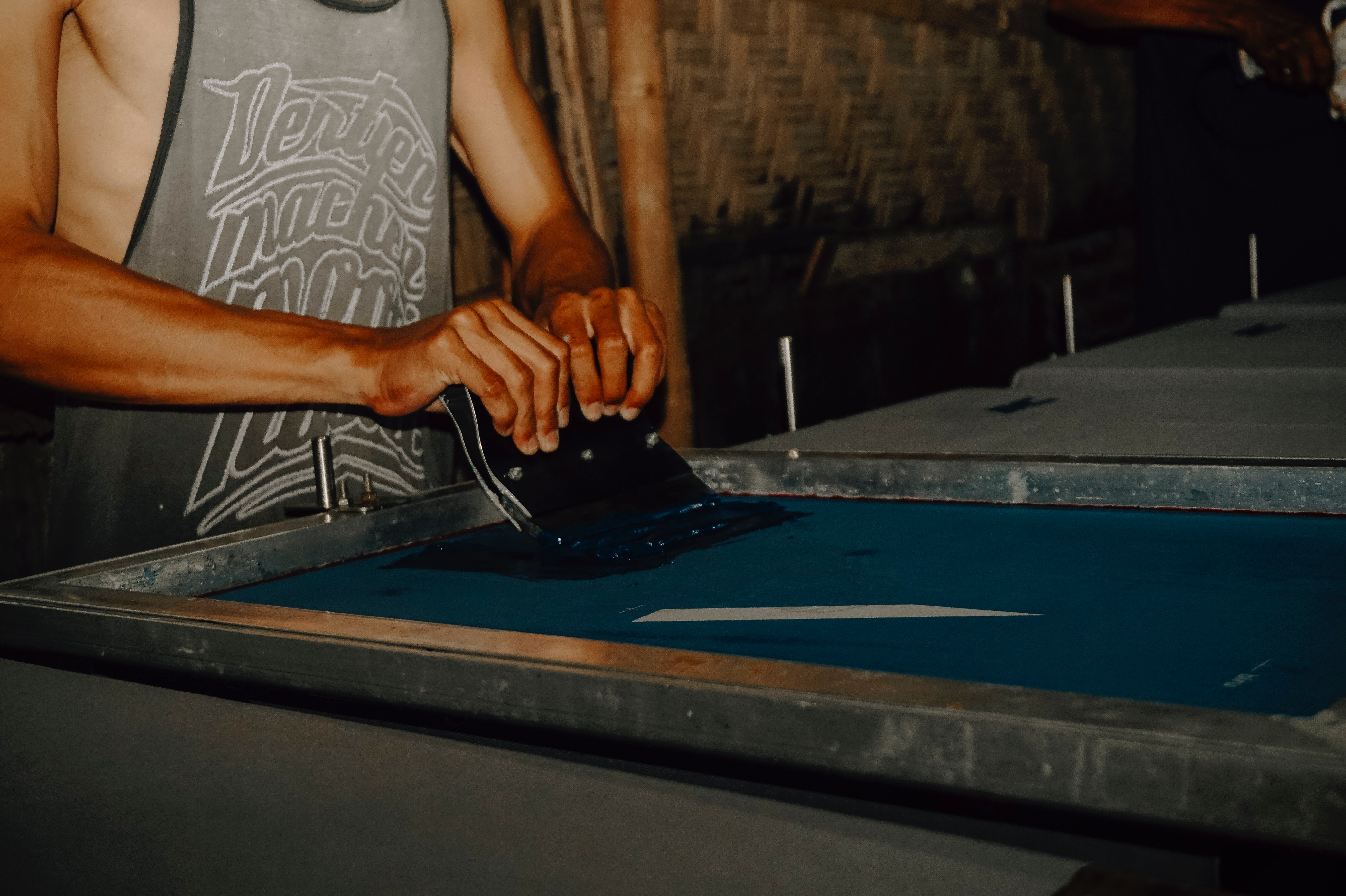What is Screen Printing?

Screen printing is always a lot of fun as a flexible printing process. Below, you'll discover exactly what screen printing is, where it's most beneficial, and how you can quickly and easily set up your own screen printing studio in your home.
Screen printing, by using a stencil, provides for consistent printing. Unlike conventional stencils, this printing technology enables for the production of extremely detailed, stand-alone artwork (such as those made of paper). It's all owing to the screen, through which the squeegee squeezes the printing ink. Ink for screen printing is the most important part for the qualitative work.
To construct a stencil, you'll need a screen printing frame, photo emulsion, a UV light source, and a design template printed in black on foil. The frame is then shown using the theme template.
By utilizing this pre-exposed frame with your own design, you may screen print on a variety of substrates.
This isn't as difficult as it seems to be. In our screen printing tutorials, we walk you through the procedures necessary to produce your own prints using ordinary household objects. A large screen printing machine is not required. However, if you need to print in volume, a printing table or screen frame clamps may be useful. Even in small spaces, printing may be done with little equipment. You can, of course, do it in the comfort of your own home; all you need are the necessary components. Our screen printing guidebook also offers a detailed list of all the additional supplies you'll need.
Application software for use with a screen printer
Screen printing is versatile because it may be used to a wide range of substrates.
In the art world, screen printing is often used on stiff materials such as paper, cardboard, and canvas. Andy Warhol pioneered this kind of graphic screen printing (also known as serigraphy) by producing numerous of his own art works with minimal help.
Screen printing is currently widely utilized on a large scale, particularly in textile printing. Textile printing may be done in both small and big batches. Textiles are manufactured there utilizing equipment such as a screen printing carousel or a huge screen printing machine.
The Fundamentals of Do-It-Yourself Printing
Even inexperienced printers may use screen printing technology to print on a variety of surfaces. The easiest method is to print on flat surfaces. This category includes anything from apparel (including T-shirts and shirts) to paper, posters, cardboard, metal, glass, stone, ceramics, and even circuit boards (from electronics). Choosing the best ink and screen for a specific work is critical.
The primary equipment is the screen printing frame. A screen is a piece of material that is stretched over a frame, which is usually composed of wood or metal. This item is available in a variety of gauges from us. The screen printing fabric (also known as gauze) is pulled tight after being properly fastened to the frame.

A look at the most common types of textile
We provide the fabric in a variety of thread counts and finenesses. One application is better suited to one of the possible finenesses. The quantity of ink squeezed through a screen is determined by the fineness of the screen. A fine screen (120T) is suitable for light ink usage. Coarse meshes work well in situations where (43T). Frames with a mesh type of 54T are ideal for first-time textile printing. A screen printing frame with a mesh size of 90T is perfect for creating test prints on paper.
We give thorough, easy-to follow screen printing instructions. We also show you how to make bespoke stencils for your screen printing projects. Some of our customers conduct side enterprises from home, such as screen printing.
